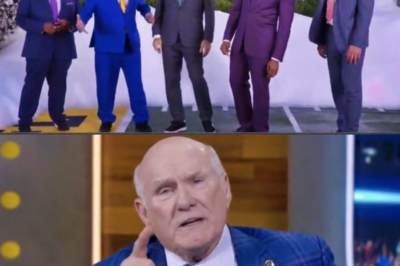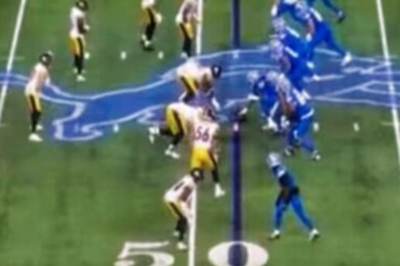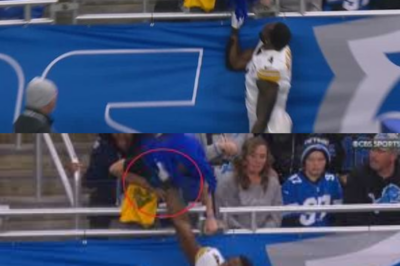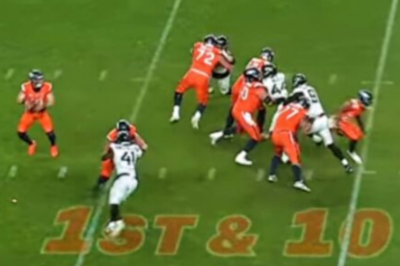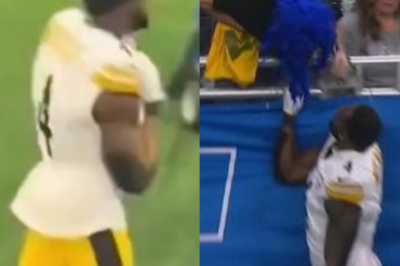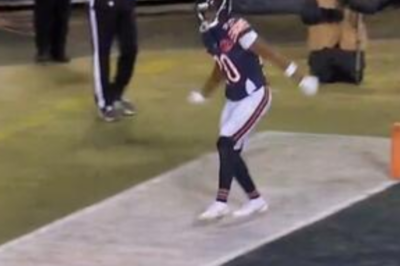Chargers’ Quentin Johnston KNOCKED OUT COLD! Shocking ‘Fencing Posture’ After Brutal Blindside Hit vs. Rams – Scary Moment You HAVE to See!
In a tense and alarming moment during the recent Los Angeles Chargers versus Los Angeles Rams game, young wide receiver Quentin Johnston became the focal point of concern for fans, players, and medical personnel alike.
The promising Chargers rookie, who has been making strides this season, experienced a brutal and unexpected collision that left spectators on edge.
The play in question involved a severe blindside hit delivered by a Rams defender, which resulted in Johnston being knocked out cold on the field, prompting immediate medical attention and raising questions about player safety in the NFL.
The Play That Changed the Game

The incident unfolded during a critical phase of the game, with the Chargers attempting to advance the ball downfield.
As Johnston lined up on the right side, the Rams’ defense executed a well-timed blitz, catching the Chargers’ offense off-guard.
The Rams linebacker or defensive back—whose identity is now part of ongoing game analysis—sprinted from the blindside, launching a powerful and unanticipated hit on Johnston just as he was preparing to make a catch or run a route.
The force of the collision was enough to send the receiver crashing to the ground, visibly dazed and unresponsive.
The Moment of Impact
What made this hit particularly unsettling was its brutal nature.
The defender’s clean but forceful contact struck Johnston from an angle that left no room for evasion, embodying what is often referred to as a “blindside hit.”
This type of collision is notorious in football for its potential to cause serious injuries, especially when the player is caught unaware.
Witnesses described the moment as “scary” and “jarring,” with many noting how quickly the scene escalated into a medical emergency.
The Aftermath: Medical Response and Player Safety

Immediately following the hit, medical personnel rushed onto the field to assess Johnston’s condition.
The player was seen lying motionless on the turf, and a sense of concern permeated the stadium.
After a thorough evaluation, Johnston was stabilized and transported off the field on a stretcher, receiving further medical attention in the sideline tent.
The incident highlighted ongoing debates about player safety, particularly regarding helmet-to-helmet contact and the risks associated with blindside hits in professional football.
The “Fencing Posture”: A Sign of Concussion or Neurological Impact?
One of the most striking aspects of this incident was the visual observation of Johnston’s body language immediately after the hit.
Footage captured by cameras and shared widely across social media platforms showed the receiver in a distinctive “fencing posture”—a position where his arms and body appeared stiff and extended, reminiscent of a fencing stance.
This posture is often associated with neurological responses following a concussion or traumatic brain injury, and experts have used it to analyze the severity of such impacts.
The “fencing posture” displayed by Johnston was a stark reminder of the physical toll football can take on its athletes.
Medical professionals and neurologists have emphasized that such reactions are indicative of the brain’s response to trauma, and they underscore the importance of proper concussion management and return-to-play protocols.
Public and Fan Reactions
The incident quickly gained traction on social media, with fans, analysts, and former players expressing concern and urging caution.
Many highlighted the importance of player safety reforms in the NFL, especially regarding hits from the blindside.
Some fans shared clips of the moment, emphasizing the brutality of the collision and questioning whether enough is being done to protect players from such dangerous plays.
The Future of Player Safety in the NFL
This event adds to a growing list of high-profile injuries in the league, fueling ongoing discussions about rule changes, enforcement, and equipment improvements aimed at minimizing such incidents.
The NFL has implemented several measures over the years, including stricter penalties for illegal hits and enhanced concussion protocols, but incidents like Johnston’s underscore the persistent risks players face.
The Road to Recovery
While the full extent of Quentin Johnston’s injuries remains undisclosed, initial reports suggest that he is undergoing medical evaluation and monitoring.
The team and league officials have expressed concern and support for the young receiver, emphasizing their commitment to player health and safety.
Fans and teammates alike are hopeful for a swift and full recovery, with some already speculating about how this incident might influence future gameplay and safety regulations.
A Wake-Up Call for the Sport

The frightening scene involving Quentin Johnston serves as a stark reminder of the physical dangers inherent in American football.
The “fencing posture” he exhibited post-impact has become a visual symbol of the neurological risks players face on every play.
As the NFL continues to evolve, incidents like this highlight the urgent need for ongoing safety measures, technological advancements in protective gear, and a cultural shift toward prioritizing athlete well-being over aggressive play.
The league’s response to this incident—and similar future events—will be crucial in shaping the future landscape of professional football.
For now, fans, players, and officials alike are reminded of the importance of vigilance, safety protocols, and respect for the physical limits of the sport’s athletes.
News
VIDEO: The Unforgettable Live TV Gaffe: How Terry Bradshaw Left Michael Strahan in Shock and Sparked a Viral Storm
VIDEO: The Unforgettable Live TV Gaffe: How Terry Bradshaw Left Michael Strahan in Shock and Sparked a Viral Storm In…
NFL Fans Believe Referees Tried to “Rig” the Lions vs. Steelers Game: An In-Depth Analysis of the Controversial Finish
NFL Fans Believe Referees Tried to “Rig” the Lions vs. Steelers Game: An In-Depth Analysis of the Controversial Finish In…
BREAKING: The one unforgivable thing a Lions fan screamed at DK Metcalf just before he snapped—this is WAY worse than trash talk.
BREAKING: The one unforgivable thing a Lions fan screamed at DK Metcalf just before he snapped—this is WAY worse than…
Uncovering the Most Shocking and Intense Hit in Recent Memory: A Deep Dive into One of the Most Frightening Moments Ever Caught on Video
Uncovering the Most Shocking and Intense Hit in Recent Memory: A Deep Dive into One of the Most Frightening Moments…
VIDEO SHOCKING NEW ANGLE EXPOSES DK Metcalf’s VICIOUS ATTACK on Lions Fan—You Won’t BELIEVE What He Did Next
VIDEO SHOCKING NEW ANGLE EXPOSES DK Metcalf’s VICIOUS ATTACK on Lions Fan—You Won’t BELIEVE What He Did Next In the…
VIDEO: Jahdae Walker just scored a TD and celebrated with a move so HYPNOTIC, it broke the internet. You have to SEE this to believe it.
VIDEO: Social Media Explodes Over Jahdae Walker’s Unbelievable Touchdown Celebration: A Mind-Blowing Display of Creativity and Voodoo Vibes In the…
End of content
No more pages to load

